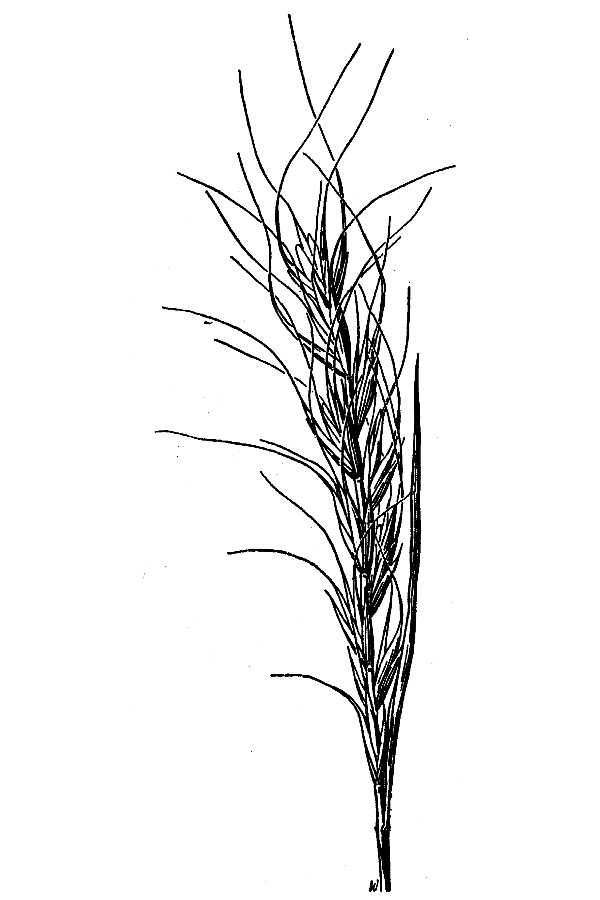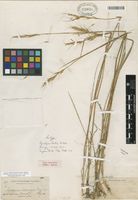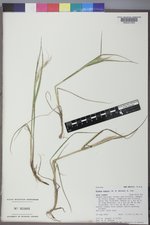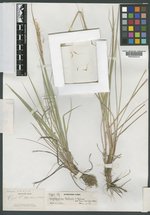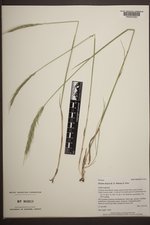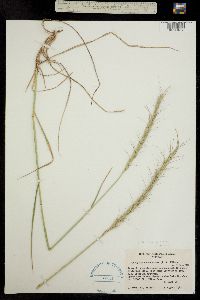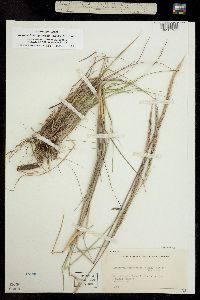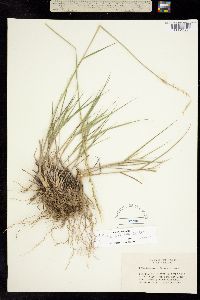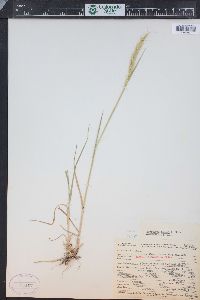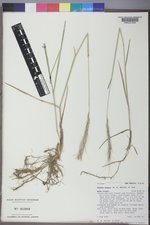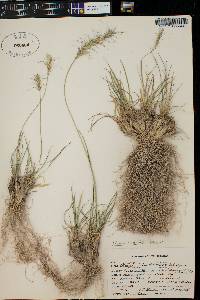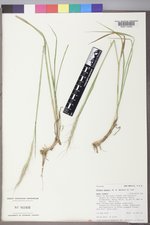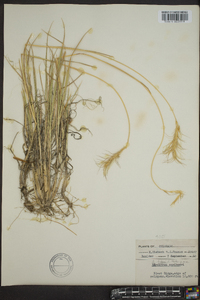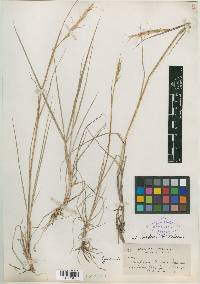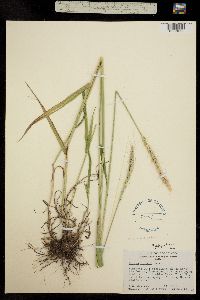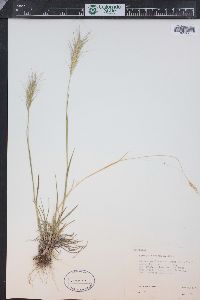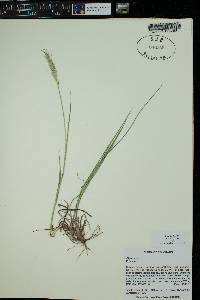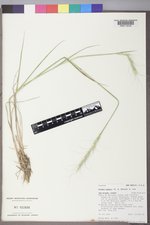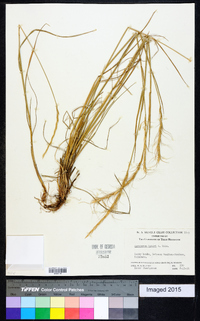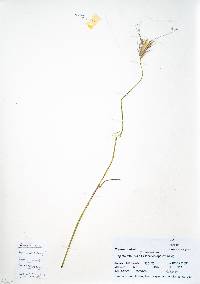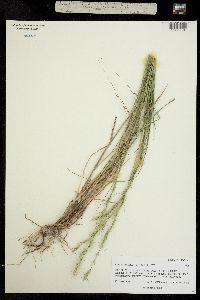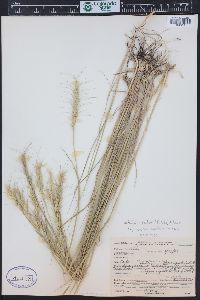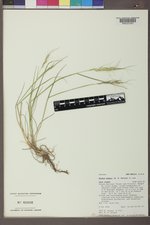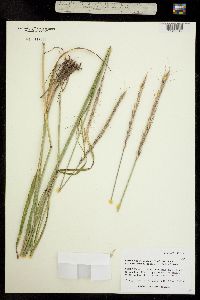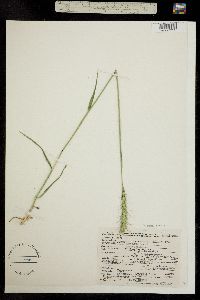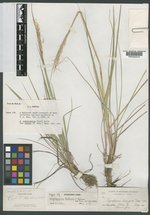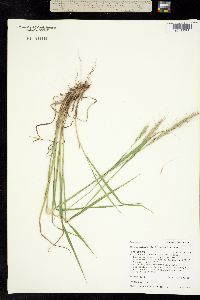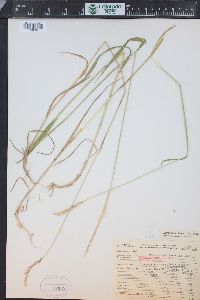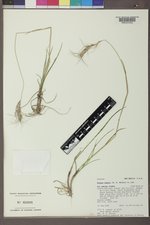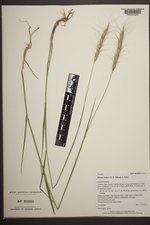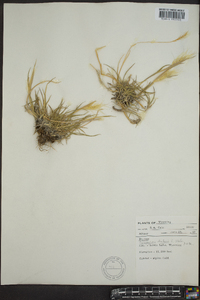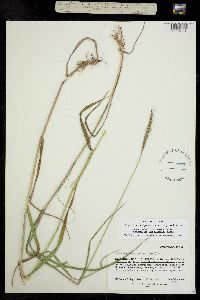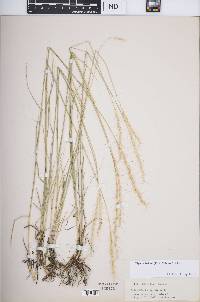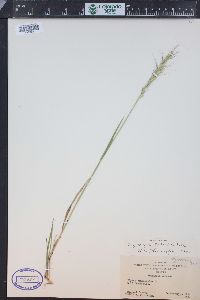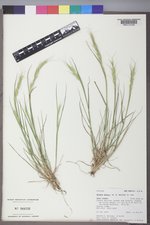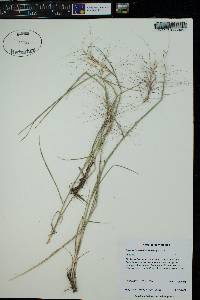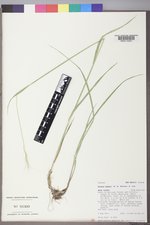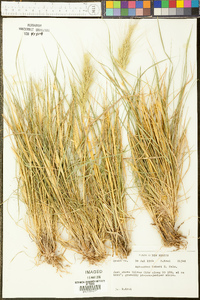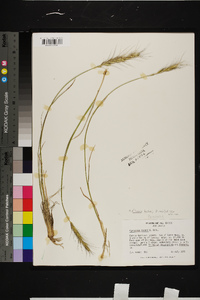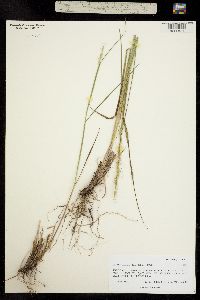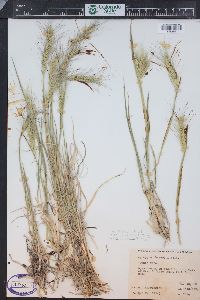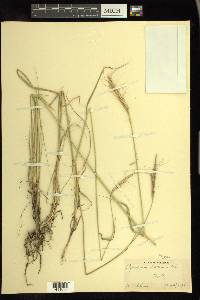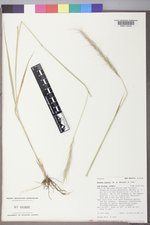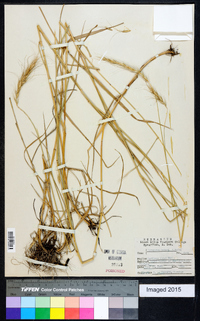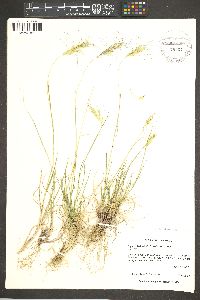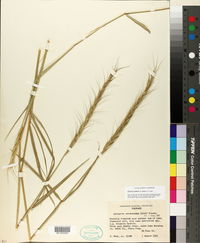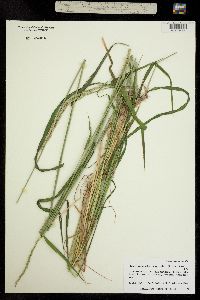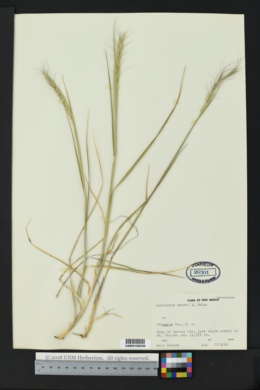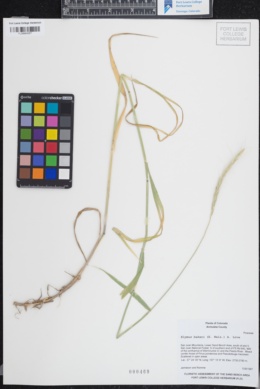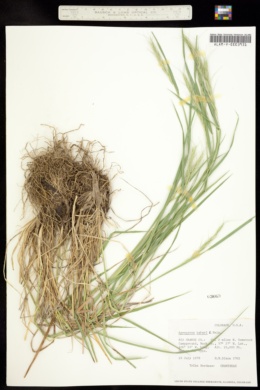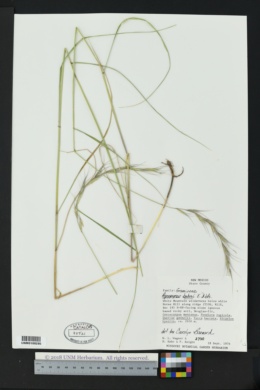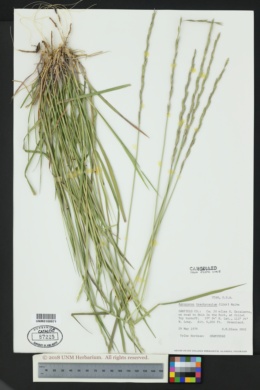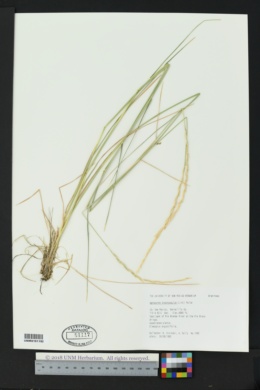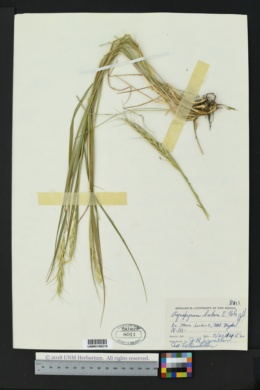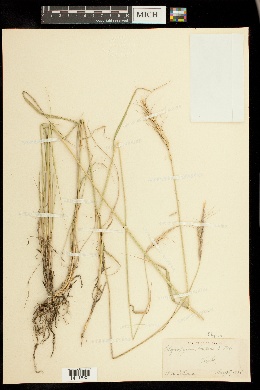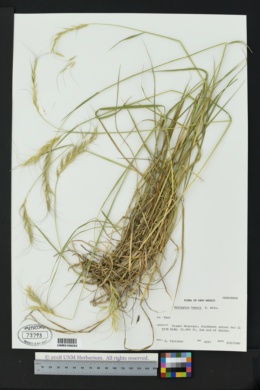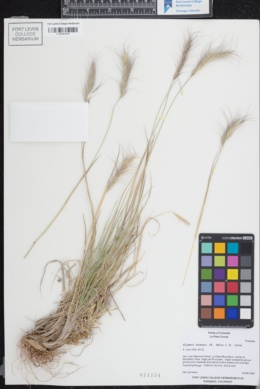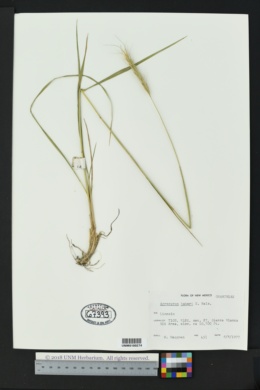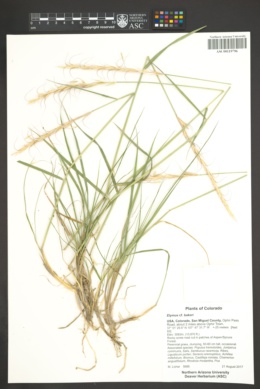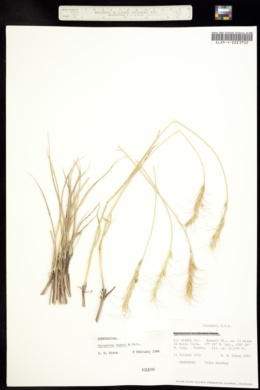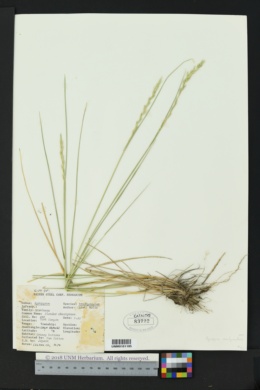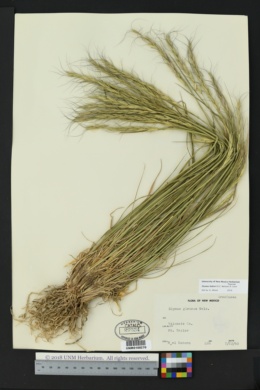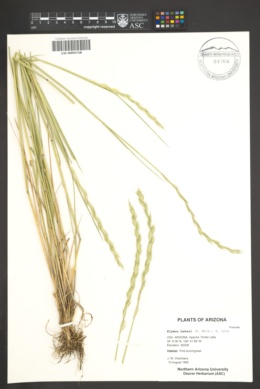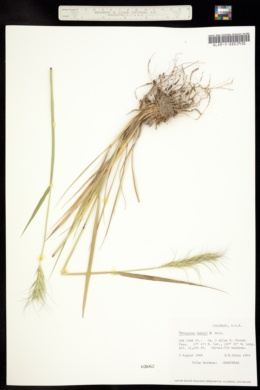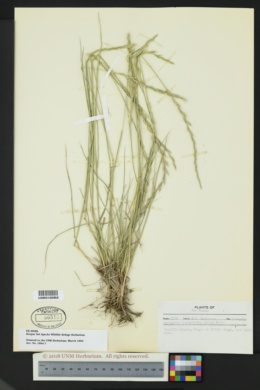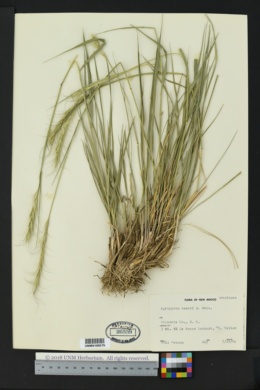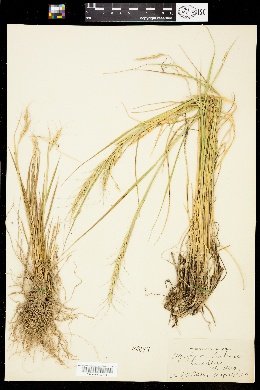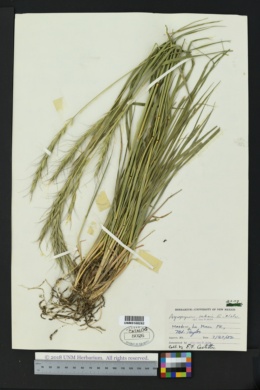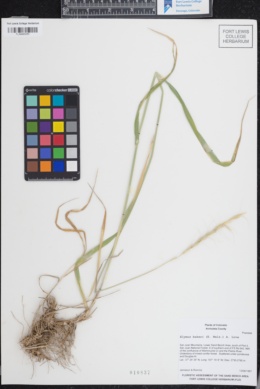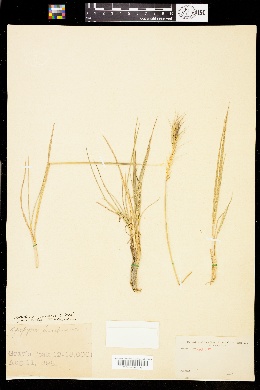
|
|
|
|
Family: Poaceae
Baker's wheatgrass, more...Baker's Wild Rye
[Agropyron bakeri E. Nels., moreAgropyron trachycaulum var. bakeri (E. Nels.) Boivin, Elymus trachycaulus subsp. bakeri (E. Nels.) A. Löve] |
Plants cespitose, not rhizomatous. Culms 30-50 cm tall, 1-2 mm thick, ascending to erect; nodes glabrous. Leaves not basally concentrated; sheaths glabrous; auricles 0.3-0.6 mm; ligules 0.5-1 mm; blades 12-20 cm long, 2-4 mm wide, stiff, abaxial surfaces smooth, glabrous, adaxial surfaces smooth or scabridulous, veins prominent, closely spaced. Spikes 8-12 cm long, 4-6 cm wide including the awns, about 1 cm wide excluding the awns, straight, erect or inclined, with 1 spikelet per node; internodes 5-9 mm long, about 0.8 mm wide, both surfaces glabrous, edges ciliate. Spikelets 10-19 mm long, about twice as long as the adjacent internodes, 4-10 mm wide, appressed, with 4-5 florets; rachillas scabrous or hirtellous; disarticulation above the glumes, beneath each floret. Glumes 7-12 mm long, 1.4-2 mm wide, narrowly oblong, usually green or green tinged with purple, the bases evidently veined or indurate for less than 0.5 mm, 5-veined, veins scabrous, margins narrow, widest distally, apices acute, sometimes bifid, awned, awns 2-8 mm, straight or divergent; lemmas scabrous or smooth, apices often shortly bidentate, awns 10-35 mm, arcuate to recurved; paleas equaling or slightly longer than the lemmas, tapering to the 0.2-0.4 mm wide apices; anthers 0.8-1.5 mm. 2n = 28. Elymus bakeri grows in high, but not alpine, mountain meadows of Montana, Utah, Colorado, and northern New Mexico. It resembles the awned phase of Pseudoroegneria spicata , but differs in having rather thicker culms and spikes, and stouter lemma awns. W.A. Weber (University of Colorado, pers. comm., ca. 1999) stated that it often forms large stands in Colorado. Reports of Elymus bakeri from Idaho appear to be based on fertile hybrids of Elymus trachycaulus -or E. violaceus -with Pseudoroegneria spicata ; that for Wallowa County, Oregon on a specimen of E. glaucus . Perennials, Terrestrial, not aquatic, Stems nodes swollen or brittle, Stems erect or ascending, Stems caespitose, tufted, or clustered, Stems terete, round in cross section, or polygonal, Stem internodes hollow, Stems with inflorescence less than 1 m tall, Stems, culms, or scapes exceeding basal leaves, Leaves mostly cauline, Leaves conspicuously 2-ranked, distichous, Leaves sheathing at base, Leaf sheath mostly open, or loose, Leaf sheath smooth, glabrous, Leaf sheath and blade differentiated, Leaf blades lin ear, Leaf blade auriculate, Leaf blades 2-10 mm wide, Leaf blades mostly flat, Leaf blade margins folded, involute, or conduplicate, Leaf blades mostly glabrous, Ligule present, Ligule an unfringed eciliate membrane, Inflorescence terminal, Inflorescence simple spikes, Inflorescence a dense slender spike-like panicle or raceme, branches contracted, Inflorescence solitary, with 1 spike, fascicle, glomerule, head, or cluster per stem or culm, Inflorescence single raceme, fascicle or spike, Inflorescence spikelets arranged in a terminal bilateral spike, Rachis dilated, flat, central axis to which spikelets are attached, Flowers bisexual, Spikelets sessile or subsessile, Spikelets laterally compressed, Spikelet less than 3 mm wide, Spikelets with 3-7 florets, Spikelets solitary at rachis nodes, Spikelets all alike and fertille, Spikelets bisexual, Spikelets disarticulating above the glumes, glumes persistent, Spikelets disarticulating beneath or between the florets, Rachilla o r pedicel glabrous, Glumes present, empty bracts, Glumes 2 clearly present, Glumes equal or subequal, Glumes shorter than adjacent lemma, Glumes equal to or longer than adjacent lemma, Glumes awned, awn 1-5 mm or longer, Glumes 4-7 nerved, Lemma similar in texture to glumes, Lemma coriaceous, firmer or thicker in texture than the glumes, Lemma 5-7 nerved, Lemma glabrous, Lemma apex acute or acuminate, Lemma apex dentate, 2-fid, Lemma distinctly awned, more than 2-3 mm, Lemma with 1 awn, Lemma awn 1-2 cm long, Lemma awn 2-4 cm long or longer, Lemma awned from tip, Lemma awns straight or curved to base, Lemma margins thin, lying flat, Lemma straight, Palea present, well developed, Palea membranous, hyaline, Palea about equal to lemma, Stamens 3, Styles 2-fid, deeply 2-branched, Stigmas 2, Fruit - caryopsis, Caryopsis ellipsoid, longitudinally grooved, hilum long-linear, Caryopsis hairy at apex. |

